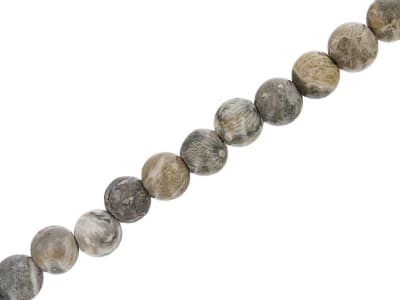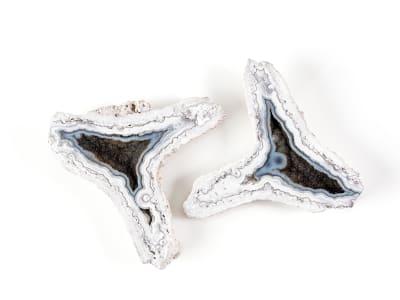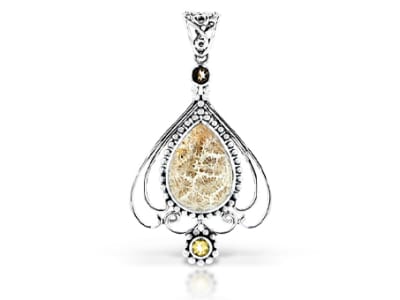Coral is the calcareous skeleton of marine animals known as coral polyps. The oldest known corals date back to 500 million years ago. In fossil coral the aragonite of the original structure is replaced by calcite or agate. The fossilization process preserves the ancient corals and makes very attractive cabochons that can be used in jewelry. Most fossilized coral in jewelry has been replaced with agate.
General Information
LWUV: Inert
Fossil Coral Colors
-
 Bi-color
Bi-color -
 Black
Black -
 Brown
Brown -
 Colorless
Colorless -
 Gray
Gray -
 Multi-color
Multi-color -
 White
White -
 Yellow
Yellow
Alternate Names
agatized coral, petrified coral
Countries of Origin
Russian Federation; Morocco; China; United States of America; United Kingdom of Great Britain and Northern Ireland; Germany; Indonesia
History
The oldest coral fossils date back to approximately 500 million years ago. There have been several prehistoric coral reef extinction events due to changes in climate or geological events. Most of the fossilized coral used in jewelry today comes from Indonesia. The Indonesian fossilized coral is approximately 20 million years old. It is believed that volcanic eruptions in the area buried the coral, and the volcanic ash provided the silica for the agate replacement of the original calcium carbonate skeleton. The ash also contained the iron and manganese that gives the material its vivid colors. Petoskey stones are the state stone of Michigan and can be found in Michigan rock quarries and on the shores of Lake Michigan and Lake Huron. They are type of rugose coral that lived in the area 350 million years ago. Agatized coral is the state gemstone of Florida. It is 25 to 38million years old and can be found in the Tampa Bay area and the Withlacoochee, Suwannee, and Econfina River valleys.
Care
Normal, gentle care care.


